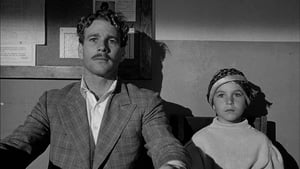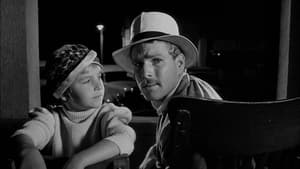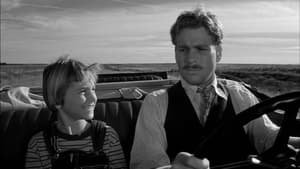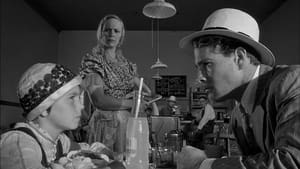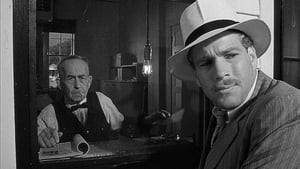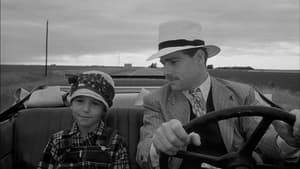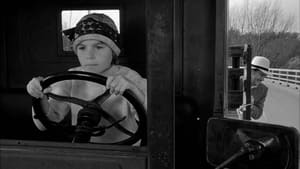Contact: [email protected]
Video Sources 0 Views
- Watch trailer
- Paper Moon Colorized

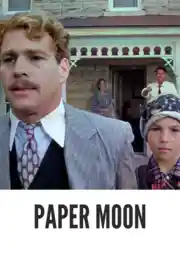
Synopsis
[ez-toc]
Introduction




In the ever-evolving world of cinema, where cutting-edge technology and innovative techniques continuously reshape the landscape, there’s an undeniable allure to revisiting old films. These timeless classics hold a unique place in the hearts of cinephiles, transporting them to eras long gone. One such masterpiece that has captivated audiences for decades is “Paper Moon Colorized” (1973). Now, with the advent of colorization, this cinematic gem has experienced a revival that adds a new layer of fascination to its narrative.
Read Media File Transfer Agreement: Terms and Conditions
Read FAQ
The Significance of Colorization in Film Restoration
Before delving into the colorized rendition of “Paper Moon Colorized,” it’s essential to understand the significance of colorization in the context of film restoration. The process involves adding color to black-and-white films, breathing new life into the visuals while preserving the original storyline. It’s a delicate dance between honoring the filmmaker’s vision and making old films more accessible to modern audiences.
In recent years, there has been a resurgence of interest in colorized movies, with many studios undertaking the task of revitalizing classics for new generations. The debate surrounding the practice has intensified, as purists argue for the preservation of films in their original form, while others champion the idea that colorization can enhance the viewing experience without compromising artistic integrity.
The Making of “Paper Moon Colorized”
To appreciate the colorized version of “Paper Moon Colorized,” one must first understand the intricacies of its creation. Directed by Peter Bogdanovich and written by Alvin Sargent, the film boasts a stellar cast that includes Tatum O’Neal, Ryan O’Neal, and Madeline Kahn. This trio of talent played pivotal roles in bringing Joe David Brown’s novel to life on the silver screen.
Peter Bogdanovich, known for his keen eye for period pieces, helmed the project with a meticulous attention to detail. The director’s commitment to authenticity and his ability to evoke a sense of nostalgia contributed significantly to the film’s timeless quality.
The casting of real-life father-daughter duo Ryan and Tatum O’Neal as Moses and Addie Loggins added a layer of authenticity to the on-screen dynamic. Their chemistry elevated the film, making it a memorable exploration of the Great Depression through the eyes of a con artist and a young girl.
Madeline Kahn’s portrayal of Trixie Delight, a supporting character with her own complexities, added depth to the narrative. The combination of these talents laid the foundation for a film that would later be embraced as a classic.
Setting and Context
“Paper Moon Colorized” unfolds against the backdrop of the Great Depression, taking viewers on a journey through the heartland of America. Set in Kansas and Missouri, the film captures the struggles and resilience of the people during a challenging period in history. The dusty landscapes and small-town charm become integral to the storytelling, creating an immersive experience that transports audiences to a different era.
The attention to detail in recreating the historical setting is a testament to the filmmakers’ commitment to authenticity. The choice of location and the period-accurate costumes contribute to the film’s overall visual appeal, setting the stage for a captivating narrative.
Plot Summary
At its core, “Paper Moon Colorized” is a road picture that follows Moses Pray (Ryan O’Neal), a con artist, and Addie Loggins (Tatum O’Neal), a young girl who may or may not be his daughter. The duo embarks on a journey filled with scams, humor, and unexpected connections. The film explores the complexities of their relationship against the backdrop of economic hardship, creating a poignant and heartwarming tale.
As Moses and Addie navigate the challenges of the Great Depression, their journey becomes a metaphor for resilience and the unbreakable bond between unlikely companions. The film’s narrative is both timeless and universal, making it a poignant exploration of human connections in the face of adversity.
Cinematography and Visual Style
Central to the allure of “Paper Moon Colorized” is its unique visual style, characterized by deep focus cinematography and extended takes. Cinematographer Lazlo Kovacs masterfully captures the essence of the era, using the black-and-white palette to enhance the film’s nostalgic atmosphere. The choice of deep focus allows for intricate compositions, where every detail becomes a part of the storytelling.
Kovacs’ cinematography becomes a character in itself, guiding the audience through the dusty roads and small-town diners that define the film. The extended takes provide a sense of continuity, allowing scenes to unfold organically and drawing viewers deeper into the narrative. The combination of these elements creates a visual masterpiece that stands the test of time.
The Controversy Surrounding Colorization in Film
The decision to colorize an old film is not without its share of controversy. The Hollywood Studio Machine, driven by commercial interests, often faces backlash from purists and artist filmmakers who argue that colorization alters the original intent of the creators. The ongoing debate questions whether colorization is a necessary tool for reaching new audiences or a sacrilege that compromises the integrity of classic films.
On one side of the argument, proponents of colorization contend that it breathes new life into old films, making them more appealing to younger audiences accustomed to modern visuals. They argue that the enhanced visual experience can introduce classic films to a new generation of viewers who might otherwise dismiss them as outdated.
Conversely, opponents argue that colorization disrupts the artistic integrity of the original work. Filmmakers often make deliberate choices regarding color, lighting, and composition, and altering these elements can change the entire mood and meaning of a scene. The controversy surrounding colorization raises essential questions about the balance between preserving cinematic history and respecting the vision of the filmmakers.
Case Study: The Colorized Release of “Paper Moon Colorized” (1973)
Against this backdrop of controversy, “Paper Moon Colorized” entered the arena with its colorized release. Director Peter Bogdanovich, known for his dedication to preserving the authenticity of his films, made the bold decision to embrace colorization for this classic.
The colorized version of “Paper Moon Colorized” garnered attention for successfully retaining the film’s original charm while introducing a vibrant new layer to the visuals. Audiences were treated to the same captivating narrative, now enhanced by the subtle hues that brought the landscapes and characters to life in a way that black-and-white couldn’t.
The success of the colorized release can be attributed to the careful approach taken by the filmmakers. Instead of overhauling the entire visual palette, the colorization process was executed with precision, respecting the original cinematography and ensuring that the essence of the film remained intact.
Viewers responded positively to the colorized version, appreciating the opportunity to experience a beloved classic in a new light. The road picture, with its humor and drama, resonated with audiences in a way that transcended the boundaries of time and color.
The Future of Colorization Technology
As technology continues to advance, so does the potential for colorization to become an even more integral part of film restoration. The future holds exciting possibilities for preserving and revitalizing old films using state-of-the-art colorization techniques. This opens the door for classic movies to find a new audience while maintaining the integrity of the original works.
Advancements in colorization technology can provide filmmakers and restoration experts with powerful tools to enhance the visual appeal of classic films without compromising their artistic integrity. The challenge lies in striking the right balance, ensuring that colorization is approached with care and respect for the filmmaker’s original vision.
Conclusion
In the grand tapestry of cinema, “Paper Moon Colorized” (1973) remains a shining example of storytelling excellence. Its recent foray into colorization adds a new chapter to its legacy, prompting audiences to reconsider the value and impact of this controversial practice. As we navigate the ongoing debate surrounding colorization in film, it’s crucial to acknowledge the delicate balance between preserving cinematic history and embracing the possibilities that technology offers.
As viewers, we stand at a crossroads, with the power to appreciate both the original black-and-white and colorized versions of classic films. “Paper Moon Colorized” invites us to explore these different artistic interpretations and recognize the role we play in supporting responsible colorization practices. The legacy of old films depends on our ability to embrace the past while embracing the future—a future where timeless classics can continue to captivate audiences, whether in shades of gray or a vibrant spectrum of color.

